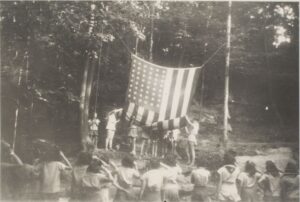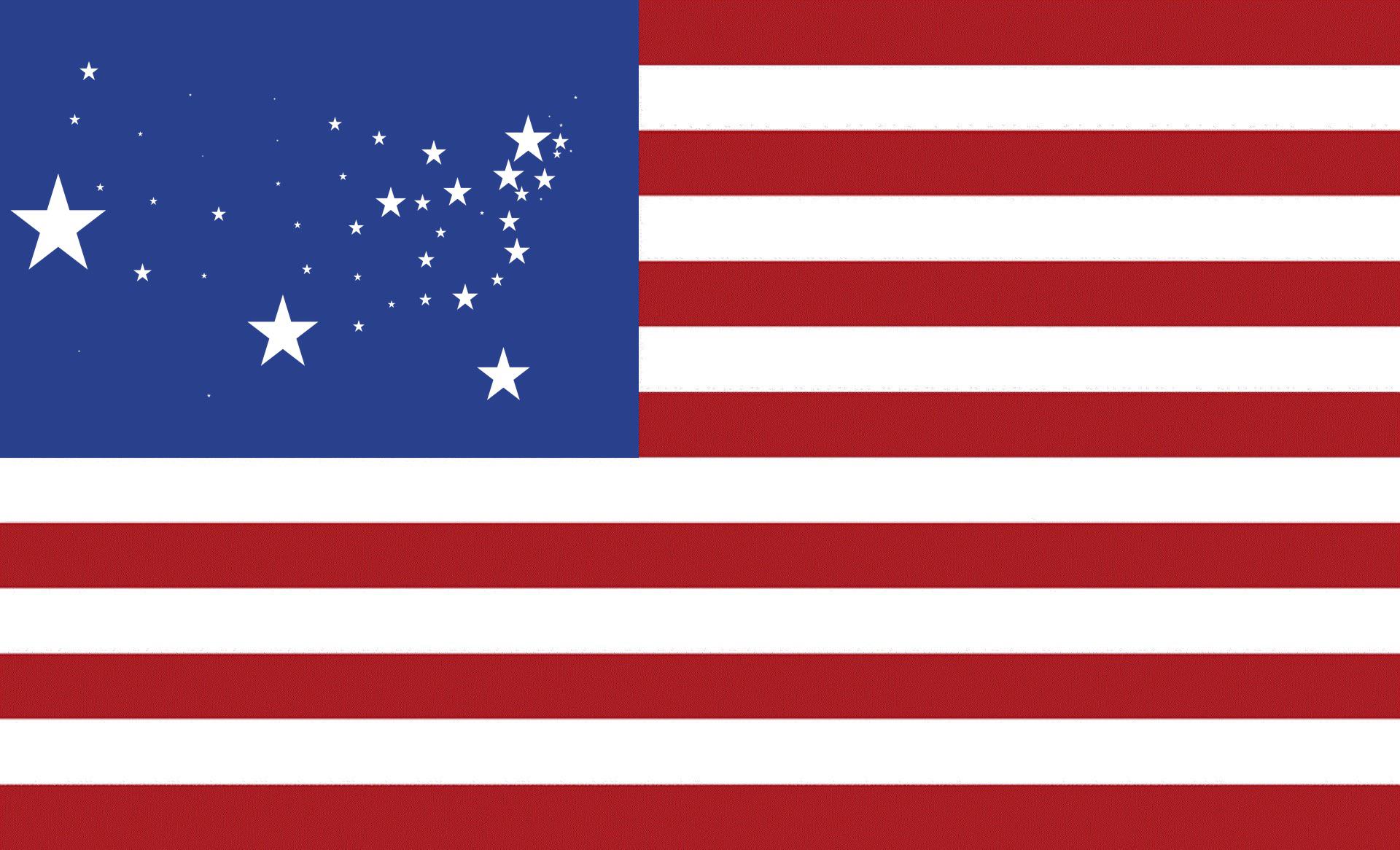Contributor(s): Shared on: Categories: Tags: | Contribute a translation | Source (English) |
|---|
|
On this anniversary
of the adoption of our national banner,
we have endeavored to bring to mind
all its solemn and sacred meanings.
May we be ever aware
of the noble purposes and deeds,
the valor and heroism,
the devotion to freedom and justice
that have made our flag sacred. | |
Let us renew today our pledge
of allegiance to the flag
and to the sacred ideals
for which it stands. | |
May we never make of it a mere fetish,
nor of our salute to it an act of blind idolatry
that commits us to nothing
but national self-pride and self-will.
But let our salute to it be a token of reverence
for the spiritual ideals of our people,
a self dedication to a national life
that advances the cause of God’s kingdom
of freedom and love. | |
The assembly rises and in unison
pledges allegiance to the flag in the following words: | |
I pledge allegiance
to the flag of the United States of America
and to the republic for which it stands,
one nation indivisible,
with liberty and justice for all. | | |
This closing ceremony for Flag Day was first published in The Faith of America: Readings, Songs, and Prayers for the Celebration of American Holidays (Jewish Reconstructionist Foundation 1951), pp. 133-135. Source(s)
Mordecai Menahem Kaplan (June 11, 1881 – November 8, 1983), was a rabbi, essayist and Jewish educator and the co-founder of Reconstructionist Judaism along with his son-in-law Ira Eisenstein. Eugene Kohn (January 26, 1887 - April 1, 1977) was an American Reconstructionist rabbi, writer and editor. Born in Newark, New Jersey he attended the Jewish Theological Seminary of America and in 1912 received ordination. It was here that he met Rabbi Mordecai Kaplan who taught him homiletics. Between 1912 and 1939 he served as a congregational rabbi in Conservative synagogues in the U.S. states of Maryland, New Jersey, New York, Wisconsin and Ohio. He also served as the president of the Rabbinical Assembly 1936-1937. He played a central role in the Reconstructionist movement. He edited its journal The Reconstructionist and, alongside Kaplan and Ira Eisenstein, edited The New Haggadah (1941), The Sabbath Prayer Book (1945) and The Reconstructionist Prayer Book (1948). Alongside Jack Cohen, Eisenstein and Milton Steinberg he was one of Kaplan's main disciples. Dr. John Paul Williams (1900-1973) was chairman of the department of religion at Mount Holyoke College. In 1946, he served as president of the National Association of Biblical Instructors (now known as the American Academy of Religion). He wrote What Americans Believe and How They Worship (1952, revised 1962) containing the chapter "Judaism -- the Mother Institution." Together with Rabbi Mordecai Kaplan and Eugene Kohn he co-authored the anthology of civic prayers, Faith in America (1951). Aharon Varady (M.A.J.Ed./JTSA Davidson) is a volunteer transcriber for the Open Siddur Project. If you find any mistakes in his transcriptions, please let him know. Shgiyot mi yavin; Ministarot naqeni שְׁגִיאוֹת מִי־יָבִין; מִנִּסְתָּרוֹת נַקֵּנִי "Who can know all one's flaws? From hidden errors, correct me" (Psalms 19:13). If you'd like to directly support his work, please consider donating via his Patreon account. (Varady also translates prayers and contributes his own original work besides serving as the primary shammes of the Open Siddur Project and its website, opensiddur.org.) Read a comment / Leave a comment (moderated) Works of related interest: |











Leave a Reply